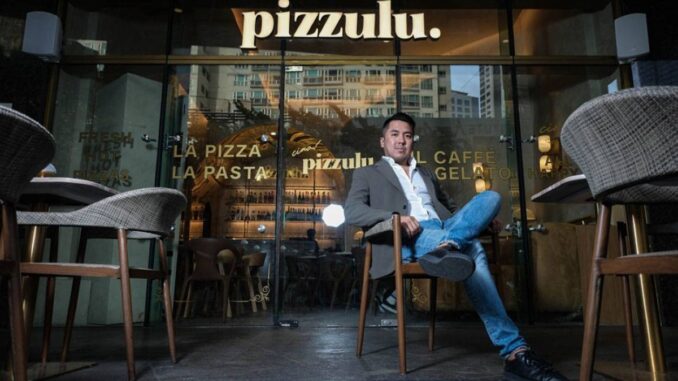
Part 1 of 2
HEIGHTENING the general public’s awareness of the importance and affordability of interior design. Differentiating its professional practitioners from architects and interior decorators. Bringing elegance and dignity to low-cost housing, government buildings, and other structures that had long been dismissed as aesthetically irredeemable. Then, finally placing Philippine interior design on the global stage where it can compete and be acknowledged and respected.
In a nutshell, those are the goals of interior designer Paolo Castro as the national president of the Philippine Institute of Interior Designers (PIID). Although he had assumed office early part of this year, one suspects he had first harbored these dreams when he became Bespoke 88’s principal interior designer about five years ago.
The passion for his craft is something that he wants to rekindle among his colleagues, especially the younger ones who are eager to make their mark. Castro, who became a professional about 13 years ago when he was just in his early 20s, also points out the new and perhaps unprecedented challenges facing them.
Among his agenda as PIID president is creating courses that will help the predominantly millennial bunch succeed, especially when it comes to business. “How do you communicate to your client or how do you close a deal” — these are the topics that he describes as “relevant to the kids — but when they graduate, these are the things they don’t know about.”
Estimating that 65 percent of Philippine interior designers are 25 to 35 years old, he expects them to be savvy about technology. He cautions them not to be overwhelmed by or feel threatened by it. AI, which he uses as a tool but does not regard as a future master, is one example.
“AI does not have feelings,” he explains, “and you need emotion and emotional intelligence to come up with a unique design. We are designing for humans.”
Storytelling is another factor that bonds human designers and human customers in a way that AI cannot. It means doing a deep dive into what the customer brand stands for and what the client’s shareholders and partners need and ensuring that each aspect of the design — the colors, the stairs, the doorknobs, the furniture, just to name a few — tells the theme consistently and unifyingly.
Two Italian restaurants
While Castro’s designs have received dozens of social media shares, he advises his peers to refrain from simply selecting and merging the latest colorful Instagram posts for inspiration. Interior design, especially for restaurants, should come from and help create a multi-sensory experience — something that AI cannot do to date.
“We design for experience,” he emphasizes. “What makes it special to go to a restaurant? You smell the food, listen to the music, and see the lighting — whatever you touch, hear, and see should all go together. That’s part of the experience.”
The two Italian restaurants he designed, which are located near each other in Forbestown Road, Bonifacio Global City, are cases in point. Although they come from similar cultures and might serve the same cuisine, their aesthetics tell different stories.
From lighting to its door handle, Al Dente Pasta Bar’s features highlight the pasta and its timeless tradition of bringing in friends who want to hang around each other in a casual yet classy way. A robust energy thrums loosely throughout its closed spaces, promising to unleash itself during the evenings when everyone unloads the day’s pressures.
A few steps down the block, Pizzulu Pizza is more leisurely, exuding a sophistication that is more apt for intimate conversations or private business meetings. Castro admits that his interior design for Pizzulu was “feminine,” as it tells the story of the restaurant owners, who were composed of sisters.
Another restaurant interior design that Castro is reshaping is renovating a familiar homegrown brand’s branch in Tagaytay. The story is rooted in the founder and the clan matriarch. While the features will remain cosmopolitan and modern, the overall atmosphere will evoke the provincial home of the quintessential beloved grandmother.
The story also responds to the challenge facing the renovated brand: Why go all the way to Tagaytay when there are similar branches in Metro Manila? Castro replies, “Because it’s like going to your Lola’s ancestral house, where she cooks for you. It’s nostalgic and safe. That’s the story: you can go back home.”
(Part 2 will be published on November 12.)






Be the first to comment